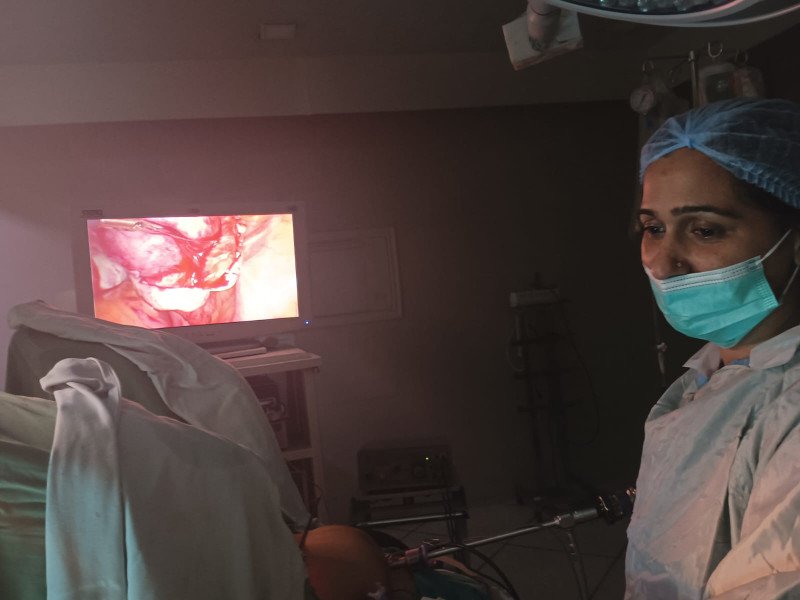Dr. Rehana Aamer Khan Treating Double vagina laparoscopically. The blind vagina leading to blood collection removed.
Treatment
& Diagnosis of Double Vagina
Double vagina, also known as uterus didelphys or double uterus, is a rare anatomical condition where a woman has two separate vagina canals, cervixes, and uteri. This congenital abnormality occurs during embryonic development when the Mullerian ducts, the precursors to the female reproductive organs, fail to fuse properly. Prof. Dr Rehana Aamer Khan is the best gynecologist surgeon in Lahore to treat the double uterus problem.
Diagnosis:
The diagnosis of double vagina typically occurs during adolescence or early adulthood when a woman experiences symptoms such as recurrent urinary tract infections, difficulty using tampons, or experiencing pain during sexual intercourse. A gynecological examination, including a pelvic exam and imaging studies, such as ultrasound or MRI, is essential to confirm the presence of two separate vagina canals, cervixes, and uteri.
Symptoms:
Women with double vagina may experience various symptoms, although some individuals may remain asymptomatic. Common symptoms include:
Double
menstruation: Women with a double vagina may
experience two separate menstrual cycles simultaneously or alternating between
the two vaginal canals.
Dyspareunia: Pain during sexual intercourse can occur due to the presence of two
vaginal canals, which may cause discomfort and difficulty with penetration.
Recurrent
urinary tract infections (UTIs): The presence of
two separate vaginal canals may increase the risk of UTIs due to the potential
for bacteria to enter the urinary tract more easily.
Fertility
issues: Double vagina may increase the risk of infertility
or complications during pregnancy, such as miscarriage or preterm labor.
Complications:
Double vagina can lead to several complications, including:
Reproductive
challenges: The presence of two separate uteri can
increase the risk of reproductive complications, such as infertility, recurrent
miscarriages, or preterm labor.
Obstetric
complications: Women with double vagina may have a
higher risk of experiencing complications during pregnancy, including
malpresentation of the fetus, premature birth, or the need for a cesarean
section.
Psychological
impact: Living with a congenital anomaly like
double vagina can potentially have psychological implications, causing feelings
of insecurity, body image concerns, and emotional distress.
Treatment
Options:
The treatment for double vagina aims to alleviate symptoms, manage complications, and improve reproductive outcomes. The choice of treatment depends on the severity of the condition, associated symptoms, and the individual`s reproductive goals. Treatment options include:
Vaginal
septum removal: In cases where the double vagina is
accompanied by a vaginal septum, a surgical procedure known as a septoplasty
can be performed to remove the septum and create a single vaginal canal. This
can help alleviate symptoms and improve sexual function.
Fertility
interventions: For women experiencing difficulties
conceiving, fertility treatments such as in vitro fertilization (IVF) or
intrauterine insemination (IUI) may be recommended to increase the chances of
pregnancy.
Pregnancy
management: Women with double vagina who become
pregnant require close monitoring by Gynecologist experienced in managing
complex obstetric conditions. Regular prenatal care, including ultrasound
examinations, can help identify and address any potential complications.
Conclusion:
Double vagina, or uterus didelphys, is a
rare congenital anomaly that can impact a woman`s reproductive health and
overall well-being. Early diagnosis and appropriate treatment are crucial in
managing the condition effectively and minimizing potential complications.
Prof. Dr Rehana Aamer Khan is best gynecologist to manage these complex
gynecological issues.


